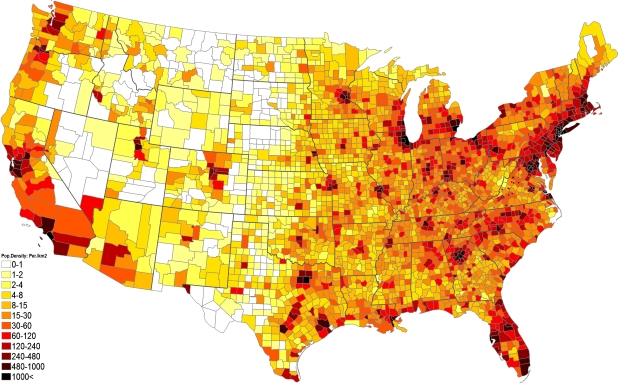How Geo-Mapping Can Be Used to Drive OPE Customer Engagements
by Black Ink Team

For industries including but not limited to the consumer durable goods industry, sales management tools such as CRM can help with doing many things, such as solving territory issues and optimizing distribution networks. They can help OPE marketers plan more effective campaigns - which is especially true when their customer relationship management software has a built-in geo-mapping feature. Having customer-centric information procedurally displayed over a map allows one to quickly get a sense of certain trends, faster than if all you have to go off of is spreadsheets. Geo-mapping has other advantages, for example it can help your sales representatives with route-planning which would help them save time and gas. Also, geo-mapping can inform marketers as to what zip codes would be best for billboards, targeted commercials, and other types of campaigns. The locations for brick-and-mortar stores won’t change, but the areas around them will. Having up-to-date information about a dealer’s area helps salespeople perfect the pitches that they’ll use when they go to meet with them, and they can easily get that from a CRM that has built-in geomapping.
Comparing dealers is easiest to do when all the information you have for them is available in the same place, which could for example be a custom CRM. From there, you can analyze many things including where your product should go based on similar store layouts, beneficial changes to your product-mix based on demographic shifts, and more. The promotional materials, product-mixes, and pricing strategies that an OPE manufacturer utilizes for independent retailers should change from region to region but keeping track of all the details can become a handful. Advanced CRM software with built-in geomapping functionality makes it easier to factor things such as weather and store location into marketing decision-making.

CRMs can be real timesavers, especially when they are designed to incorporate a wide range of key performance indicators (KPIs) into geomapping. For example, when a territory manager can overlay time-in-inventory averages over a geographical region, they can then quickly tell which dealers in that region have comparably high or low turnover. Plus, they are given context for where the businesses are which might affect their decision-making. Other business intelligence data such as sales projections can be leveraged in this way via CRM, as well.
Putting a framework into place today, for your company to start using a CRM, will make it easier for you to transition to using a more advanced CRM in the future. Since machine-learning, among other advancements, might enable other OPE marketers one day to conduct A/B tests at the push of a button, the risk of your organization falling behind will become greater. Long-term investments in software make sense for OPE companies in areas other than marketing and sales, as well. For example, recent innovations made in logistics management software can help organizations streamline their distribution in real-time.
Regardless of your distribution model, the implementation of sales software should coincide with a culture shift within your company. Taking steps to maximize data transparency within and between departments, for example, is paramount if your sales reporting and data visualization efforts are to go on smoothly. A commitment to harnessing advanced analytics requires teamwork and may even require that changes be made to organizational hierarchy.
